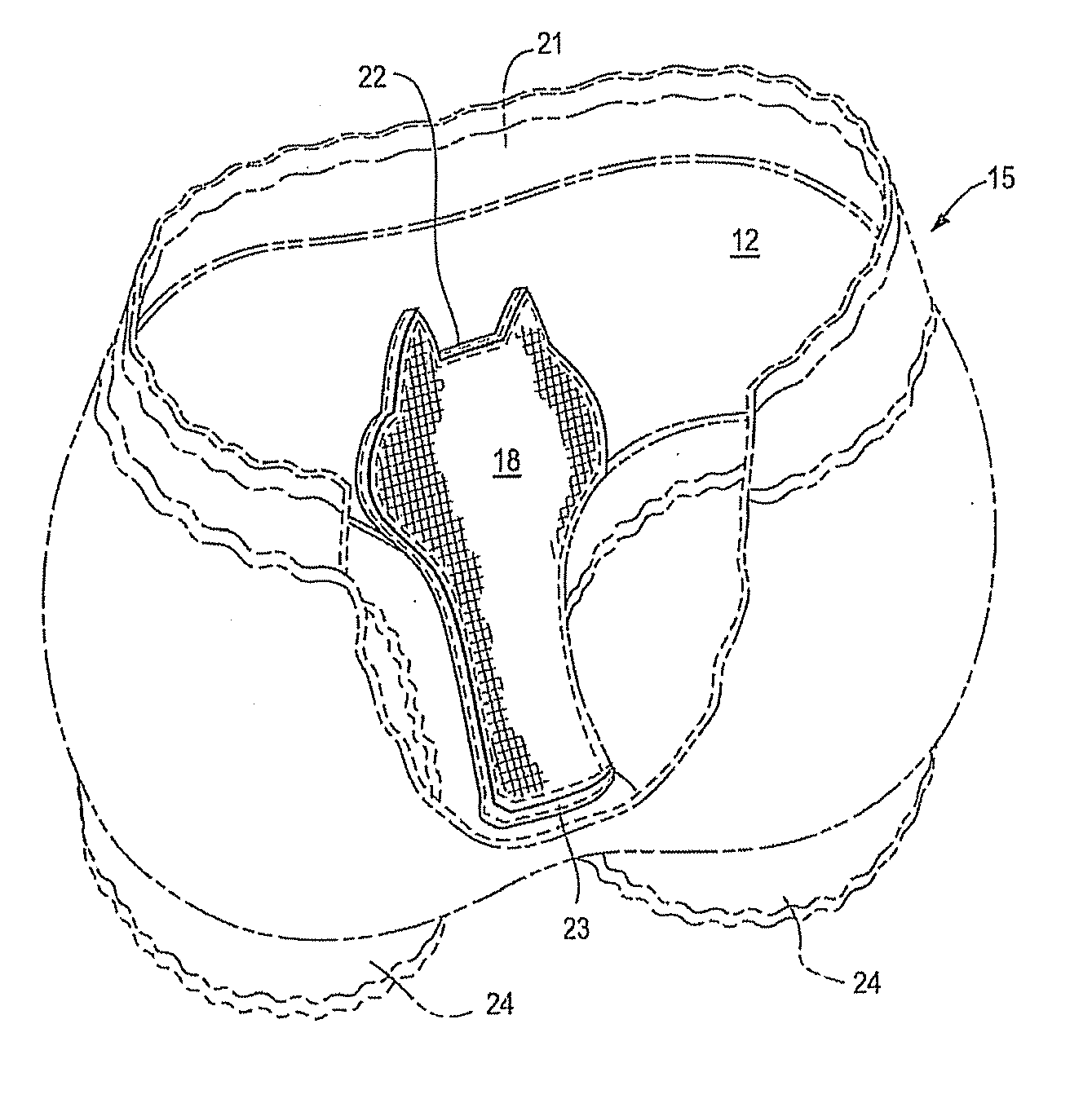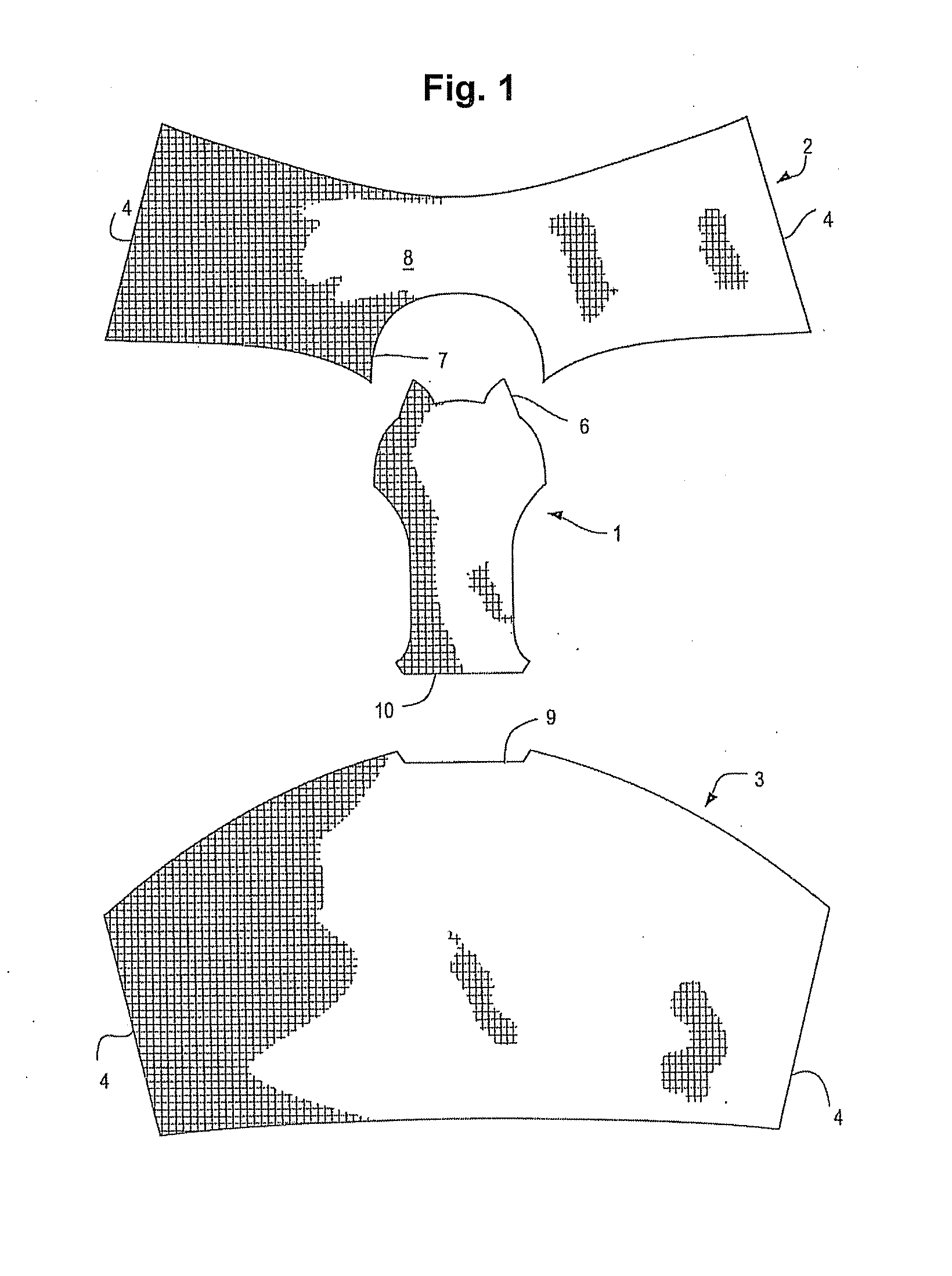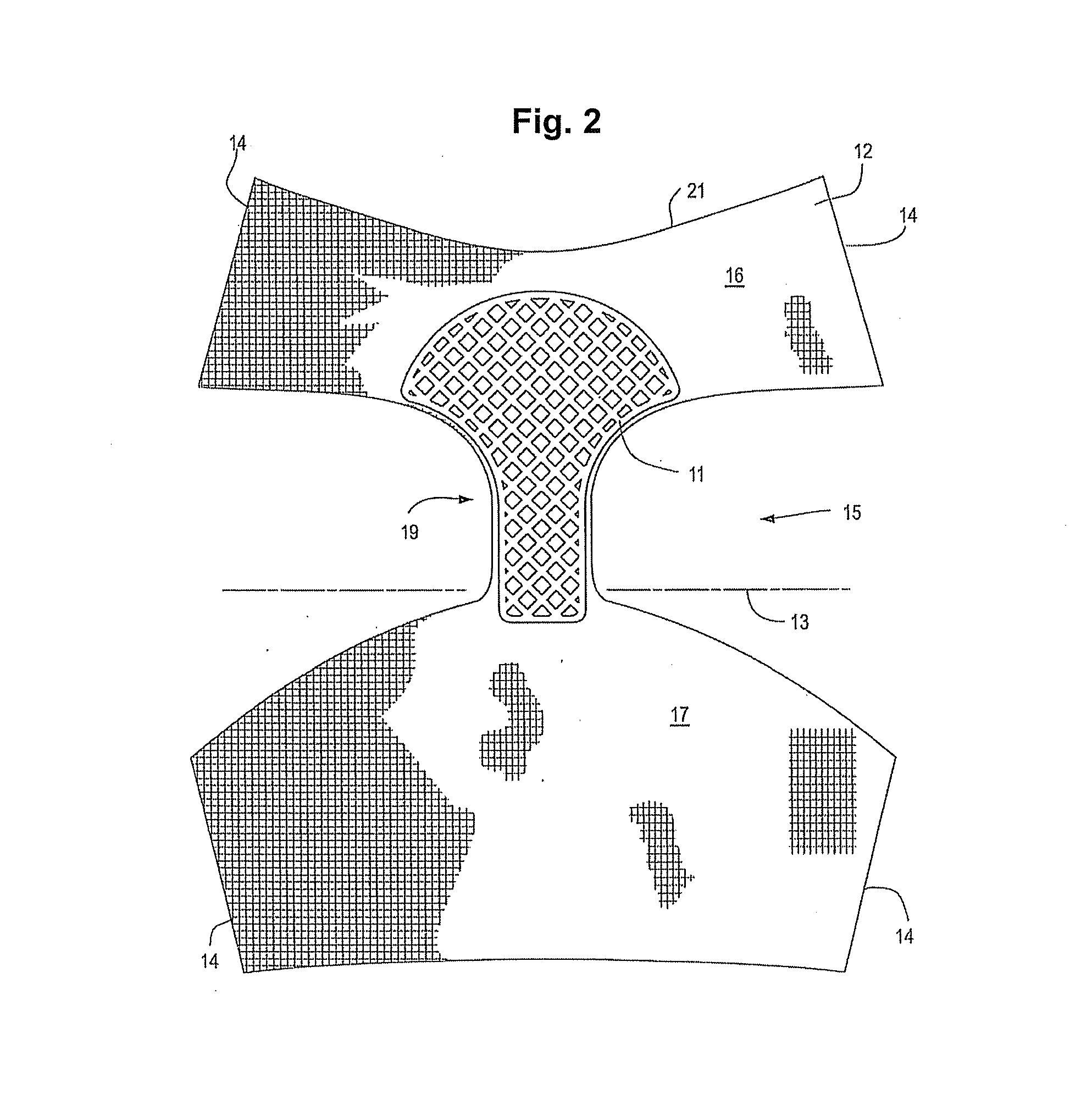Despite variations in the
cut, shape, fabric, etc., among different brands and styles of women's undergarments, currently available designs feature similar
crotch panels and gussets that do not offer the wearer an optimal level of comfort.
Currently known, available incarnations of undergarments incorporate gussets, crotch region pieces and / or gusset liners that are highly problematic in that they are designed and constructed in a manner such that the edges of the gusset, the material transitions between the gusset and garment body material, and the seams and stitching which serves to attach the pieces all exist within a sensitive genital region of the wearer, causing discomfort, abrasion, and
irritation.
This renders contact with them more irritating,
abrasive, and undesirable than contact with an expanse of flat, seamless fabric.
In such garments, even a larger gusset does not adequately compensate for the thickness and presence of the ridges generated by the seams resulting from the joined pattern pieces, which thereby cause discomfort for the wearer, despite the presence of any overlaid gusset.
Whether secured or left as untethered flaps, the front edges of the gussets in known, current products do not extend far enough toward the front of the undergarments, toward the
navel and the waistband, such that these edges directly contact wearers' genital region and can cause chafing and discomfort.
Additionally, many undergarments feature designs where the gusset and / or crotch panel pieces are fashioned from one fabric, and the body pieces of the garment are constructed from another fabric that is less suitable in texture and composition for the genital region.
Since the gussets in these products do not extend far enough up the front inner face of the garment toward the
navel, the transition from the gusset fabric to the body fabric typically occurs well within the sensitive genital region, such that the wearer's sensitive genital region is forced into direct contact with the seams generated by the fabric transition and the potentially uncomfortable body fabric.
Moreover, many existing undergarments for women suffer from design flaws that cause them to migrate up the wearer's body and become wedged into the crevice between the
buttocks.
These treads can cause
skin irritation, ingrown hairs, and / or roll upwards if displaced through movement or friction with clothing, which consequently renders said leg bands ineffective.
The spatial orientation of currently available rubber treads and elastic leg bands on current undergarment styles do not adequately and successfully anchor the undergarment in place, and therefore do not sufficiently prevent upwards migration.
Additionally, these rubber and plasticized treads and elasticized leg bands often result in undesirable garment demarcation lines that are often easily visible through outer clothing.
However, these undergarments are constrictive by necessity of their design and generally made from non-breathable, synthetic fabrics.
Most importantly, these products have gussets of insufficient size that fail to protect the wearer from uncomfortably located fabric transitions and seams.
They are generally promoted as being “ultra thin,” or “like wearing nothing at all.” Such products do not, however, aid in improving the appearance of the wearer's body, prevent upwards migration, or in reality, offer any meaningful enhancement to the wearer's comfort.
Since outerwear is usually constructed from thicker, rougher textiles, it generally results in thicker, rougher seams.
A thinner, flimsier undergarment garment offers less protection from these seams, which subsequently offers the wearer a lower level of comfort.
Additionally, many of these undergarments are constructed from
synthetic materials, which result in reduced breathability and thus render the wearer more prone to an imbalance in personal body
chemistry, which ultimately places the wearer at risk for developing
vaginal infections.
The thinness of the body fabric and the lack of sturdy anchoring leg or waistbands may also cause these undergarments to displace during wear.
The synthetic fabrics, padding and thickened regions also serve to trap body heat, which results in the wearer experiencing an elevation in
temperature perception.
Although mesh panels are sometimes incorporated to counteract the accumulation of heat, it is an imperfect remedy, and one which also results in demarcation lines and patterns that are detectable through outer clothing.
They are not designed or suitable for regular
daily wear, under normal outerwear, over extended periods of time.
The presence of raised, raw,
abrasive, uncovered seams in this area does not offer optimal comfort for the wearer.
Furthermore, a wearer's movements during sitting and / or sleep can cause the crotch panel of the garment to ride upwards and into direct contact with the wearer's sensitive genital region, often becoming painfully wedged in the crevice between the
buttocks, and / or the
labia.
Existing pajama bottoms do not feature a strategy to protect the wearer's genital region from these exceptionally uncomfortable, raw, rough, uncovered seams and exposed stitching.
 Login to View More
Login to View More  Login to View More
Login to View More 


